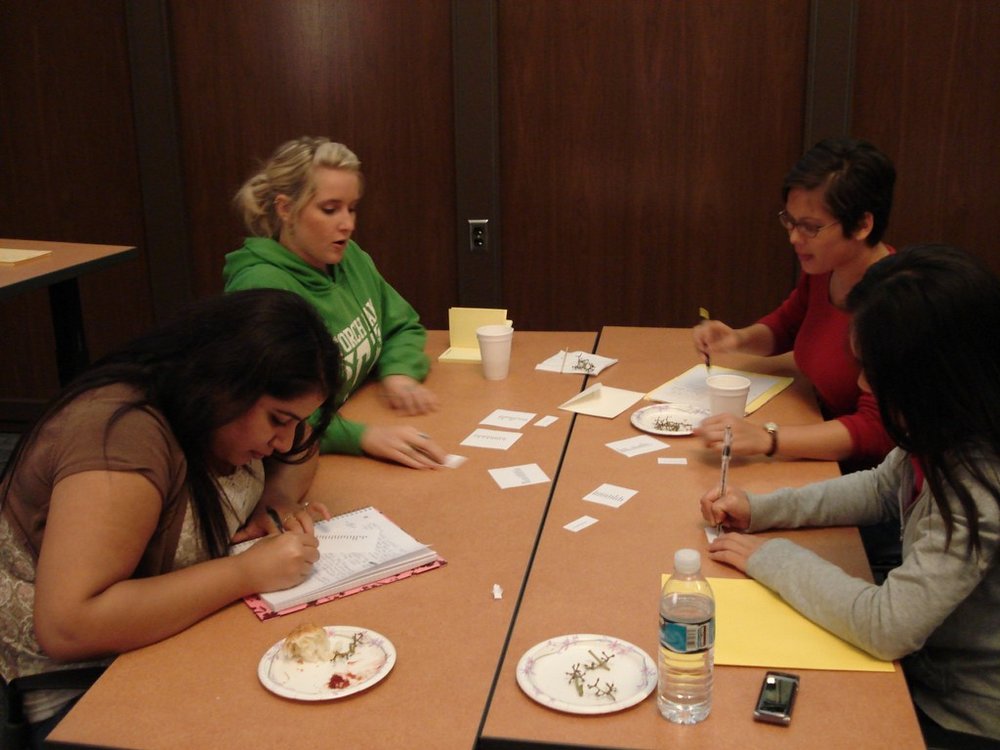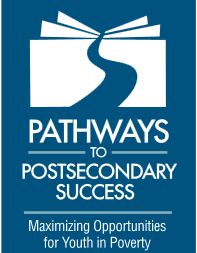
This blog focuses on my scholarship in my five research projects: learning assistance and equity programs, student peer study group programs, learning technologies, Universal Design for Learning, and history simulations. And occasional observations about life.
New Publication: Understanding the Peer Assisted Learning Model
 Since 2006, the PAL program at the University of Minnesopta has contributed to improved academic performance of participating PAL students in rigorous introductory-level college courses.The program is built upon best practices from previous international peer learning models like Supplemental Instruction, Peer-led Team Learning, Emerging Scholars Program, and others. PAL is also guided by learning theories such as Universal Design for Learning to make the model more culturally-sensitive and embedded within the courses to increase its effectiveness for all students. Both quantitative and qualitative studies of PAL validate its effectiveness for increasing academic success of participating students and fostering development of personal and social skills. In addition to benefits for the participants, the PAL experience benefits PAL facilitators through deeper mastery of rigorous course material, increased confidence in public speaking and small group management skills, and encouragement to pursue a teaching career. While the PAL program was started to address the achievement gap in courses, it has bloomed into one that also enhances personal and professional skills for all that are involved.Built upon principles identified by other academic support programs and innovations of its own creation, PAL is an integral part of UMN’s overall academic support efforts.
Since 2006, the PAL program at the University of Minnesopta has contributed to improved academic performance of participating PAL students in rigorous introductory-level college courses.The program is built upon best practices from previous international peer learning models like Supplemental Instruction, Peer-led Team Learning, Emerging Scholars Program, and others. PAL is also guided by learning theories such as Universal Design for Learning to make the model more culturally-sensitive and embedded within the courses to increase its effectiveness for all students. Both quantitative and qualitative studies of PAL validate its effectiveness for increasing academic success of participating students and fostering development of personal and social skills. In addition to benefits for the participants, the PAL experience benefits PAL facilitators through deeper mastery of rigorous course material, increased confidence in public speaking and small group management skills, and encouragement to pursue a teaching career. While the PAL program was started to address the achievement gap in courses, it has bloomed into one that also enhances personal and professional skills for all that are involved.Built upon principles identified by other academic support programs and innovations of its own creation, PAL is an integral part of UMN’s overall academic support efforts.
Arendale, D. R. (2014). Understanding the Peer Assistance Learning model: Student study groups in challenging college courses. International Journal of Higher Education, 3(2), 1-12. doi:10.5430/ijhe.v3n2p Retrieved from http://www.sciedu.ca/journal/index.php/ijhe/article/view/4151/2498
Postsecondary Peer Cooperative Learning 2014 Annotated Bibliography
Postsecondcary Peer Cooperative Learning 2014 Annotated Bibliography. Compiled by David Arendale.
<Click on this web link to download the document.>
I just updated my annotated bibliography on peer learning programs. The bibliography is 160,000 words and 340 pages in length. It features every article or report published on six of the major peer learning programs in higher education: Accelerated Learning Groups (developed by Sydney Stansbury at University of Southern California), Emerging Scholars Program (developed by Uri Treisman at UC-Berkeley), Peer-led Team Learning (developed at City Univeristy of New York), Structured Learning Assistance (developed at Ferris State University), Supplemental Instruction (developed at the University of Missouri-Kansas City), and Video-based Supplemental Instruction (developed at UMKC as well).
Peer collaborative learning has been popular in education for decades. As both pedagogy and learning strategy, it has been frequently adopted and adapted for a wide range of academic content areas throughout education at the elementary, secondary, and postsecondary levels due to its benefits. The professional literature is filled with reports of individual professors integrating this approach into postsecondary classrooms in diverse ways. Increased attention has been placed on this practice due to claims by some programs that carefully coordinated and managed learning programs with specific protocols can increase student persistence rates towards graduation, supporting both student goal aspirations as well as bolstering institutional revenues..

The six student peer learning programs included in this bibliography meet the following characteristics: (a) the program must have been implemented at the postsecondary or tertiary level; (b) the program has a clear set of systematic procedures for its implementation that could be replicated by another institution; (c) program evaluation studies have been conducted and are available for review; (d) the program intentionally embeds learning strategy practice along with review of the academic content material; (e) the program outcomes include increased content knowledge, higher final course grades, higher pass rates, and higher college persistence rates; and (f) the program has been replicated at another institution with similar positive student outcomes. From a review of the professional literature six programs emerged: Accelerated Learning Groups (ALGs), Emerging Scholars Program (ESP), Peer-Led Team Learning (PLTL), Structured Learning Assistance (SLA), Supplemental Instruction (SI), and Video-based Supplemental Instruction (VSI). Some of the programs share common history and seek to improve upon previous practices. Other programs were developed independently.
An Hour Makes a Difference By Scott Jaschik
 For years, studies have found that first-generation college students -- those who do not have a parent with a college degree -- lag other students on a range of education achievement factors. Their grades are lower and their dropout rates are higher. But since such students are most likely to advance economically if they succeed in higher education, colleges and universities have pushed for decades to recruit more of them. This has created "a paradox" in that recruiting first-generation students, but then watching many of them fail, means that higher education has "continued to reproduce and widen, rather than close" an achievement gap based on social class, according to the depressing beginning of a paper forthcoming in the journal Psychological Science. But the article is actually quite optimistic, as it outlines a potential solution to this problem, suggesting that this approach (which involves a one-hour, next-to-no-cost program) can close 63 percent of the achievement gap (measured by such factors as grades) between first-generation and other students.
For years, studies have found that first-generation college students -- those who do not have a parent with a college degree -- lag other students on a range of education achievement factors. Their grades are lower and their dropout rates are higher. But since such students are most likely to advance economically if they succeed in higher education, colleges and universities have pushed for decades to recruit more of them. This has created "a paradox" in that recruiting first-generation students, but then watching many of them fail, means that higher education has "continued to reproduce and widen, rather than close" an achievement gap based on social class, according to the depressing beginning of a paper forthcoming in the journal Psychological Science. But the article is actually quite optimistic, as it outlines a potential solution to this problem, suggesting that this approach (which involves a one-hour, next-to-no-cost program) can close 63 percent of the achievement gap (measured by such factors as grades) between first-generation and other students.
What is the solution? A one-hour program for new students that is called a "difference-education intervention."
In the program, college juniors and seniors from a range of backgrounds talk about how they adjusted to college, and how they sought out resources and people to help them with decisions, issues they didn't understand and so forth.

Among the areas where they found a notable impact from participants in the program: higher grade-point averages and significant increase in the odds of using various campus resources that help students with a range of issues. The authors of the paper are Nicole M. Stephens, associate professor of management and organizations at the Kellogg School of Management at Northwestern University; MarYam G. Hamedani, associate director of the Center for Comparative Studies in Race and Ethnicity at Stanford University; and Mesmin Destin, assistant professor of psychology at Northwestern University. Their findings are based on a study involving 147 students (who completed the project) at an unnamed private university. First generation was defined as not having a parent with a four-year college degree. Most of the first-generation students (59.1 percent) were recipients of Pell Grants, while this was true only for 8.6 percent of the students with at least one parent with a four-year degree. Their thesis -- that a relatively modest intervention could have a big impact -- was based on the view that first-generation students may be most lacking not in potential but in savvy about how to deal with the issues that face most college students. They cite past research by several authors to show that this is the gap that must be narrowed to close the achievement gap.
Many first-generation students "struggle to navigate the middle-class culture of higher education, learn the 'rules of the game,' and take advantage of college resources," they write. And this becomes more of a problem when colleges don't talk about the class advantages and disadvantages of different groups of students. "Because U.S. colleges and universities seldom acknowledge how social class can affect students' educational experiences, many first-generation students lack insight about why they are struggling and do not understand how students 'like them' can improve."
Study finds key criteria that determine college success for low-income youth
 <Click on this link to download this report.>
<Click on this link to download this report.>
A five-year study by UC researchers that included a survey of California youth and interviews with more than 300 young adults about their interactions with educational institutions has identified the five key issues that matter most for understanding and improving college success for low-income students. The $7.5 million study, “Pathways to Postsecondary Success: Maximizing Opportunities for Youth in Poverty,” spotlights the importance of student voices, an understanding of student diversity, asset-based approaches to education, strong connections between K–12 and higher education, and institutional support for students. The study was funded by the Bill and Melinda Gates Foundation and was issued by the University of California’s All Campus Consortium on Research For Diversity (UC/ACCORD) at UCLA’s Graduate School of Education and Information Studies (GSE&IS).
“Our study began in 2008, at the onset of a critical economic downturn—the Great Recession—which impacted education and the labor market in considerably complex ways,” said UC/ACCORD director Daniel Solórzano, co-principal investigator on the study and a professor of social sciences and comparative education at GSE&IS. “It was clear the recession had an effect on both colleges and students. Budget cuts slashed enrollments at campuses and decreased the resources for those already enrolled. Many low-income students faced even greater financial instability from the scarcity of work or sudden unemployment of family members. Therefore, at a time when students’ required additional support to stay on the path through college, the supports and conditions that are vital to their success were disappearing or overburdened on campuses.”
While “Pathways” reports on national data, the study focused on California, which has the largest number of community colleges (112). The vast majority of low-income students in California who pursue post-secondary education begin at community colleges.
Principal findings from the study include:
- Student voices matter: Education is a powerful force in the lives of low-income youth, and hearing what students say about their experiences is essential to understanding their educational pathways and outcomes. Financial difficulties, lack of available classes, transportation problems and a lack of availability of child care are obstacles to many low-income students’ success. Yet students reported that when they experienced caring educators and high-quality instruction in high school or college, this made a difference in their engagement and success in college.
- Diversity matters: Low-income youth are a diverse group, and understanding the similarities and differences in this student population enables administrators to better plan college success initiatives. In California, students of color make up the majority of community college enrollment, and many are the first in their family to attend college. Almost half (46 percent) of community college students are older, 54 percent work full-time and 16 percent are parents. “Common understandings of traditional college students may be less relevant as we plan for the growing number of community college students who are working full-time, raising families and have many responsibilities outside of school,” said Amanda L. Datnow, co-principal investigator on the study and a professor of education at UC San Diego. “These students are quickly becoming the majority, and we need to orient around their needs.”
- Assets matter: Report findings indicate that an asset-based approach helps education administrators tap into and foster students’ strengths in order to support college success. Low-income students enroll and often persist in college, although not always in traditionally defined ways. They arrive with high aspirations to do well and either finish their certificate program or transfer to a four-year college. Successful programs at the colleges affirm and tap into these assets.
- Connections between K–12 and higher education matter: High-quality K–12 schooling, combined with college preparatory resources, helps ensure college-going success for students. Nationally, 78 percent of low-income youth do not complete a college-preparatory curriculum in high school. In California, 85 percent of community college students require remediation in math and English to complete coursework they should have been taught in high school. Therefore, to ensure college readiness, better articulation between high schools and colleges needs to occur, and students need accurate information about enrollment practices and assessment procedures.
- Institutional supports and conditions matter: While funding cuts have resulted in reductions in mentoring programs and supports for students, financial difficulties, transportation problems and a lack of child care also frustrate many low-income students’ attempts to fulfill their goals. Low-income students are particularly dependent on financial aid to attend college, and information about resources—including academic and other services—must be integrated and streamlined to make the existing process less complicated and easier to access.
The multi-method study included the development of a monitoring tool to track educational opportunities for low-income youth. It also identified a set of indicators at the organizational level of community college campuses that support student success.
New WWC Quick Review on Daily Online Testing in Large Classes: Boosting College Performance While Reducing Achievement Gaps
This study investigated the effect of daily quizzes on the performance of college students. Students in an introductory psychology course used their own wireless-enabled devices to take short, Internet-based quizzes at the beginning of every class. The quiz items were drawn approximately equally from material covered in the readings and the lectures. The study authors examined impacts of the daily quizzes on student performance in the psychology course, in addition to other classes taken during the same semester and during the semester following the introductory psychology class.
The intervention took place during the fall 2011 semester, and the performance of intervention students was compared to students from the fall 2008 semester. About 50% of the students in the sample were racial/ethnic minorities, and about 60% were female. About 20% of students were first generation college students, and most students were in their first or second year of college. The study authors reported that there was a nearly statistically significant effect (p = 0.06) of the daily quizzes on student performance in introductory psychology. Specifically, the daily quizzes incorporated 17 items that were also used on tests given during the comparison semester. Students in the daily quiz condition scored higher on these 17 items (77%) than the comparison students (71%). In addition, students in the intervention condition earned higher grades in their other courses during both the fall (3.07 vs. 2.96) and the subsequent spring (3.10 vs. 2.98) semesters. However, it is unknown whether these differences are statistically significant. Finally, the authors reported a statistically significant interaction suggesting that these effects were strongest among lower-middle SES students. This study is a cohort-based quasi-experiment, and as such could meet WWC evidence standards with reservations. However, more information is needed from the study authors regarding the comparability of the intervention and comparison students at baseline before a rating can be given. A more thorough review (forthcoming) will determine the final study rating and report more fully on the study’s results.
Citation: Pennebaker, J., Gosling, S. D., & Ferrell, J. D. (2013). Daily online testing in large classes: Boosting college performance while reducing achievement gaps. PLoS One 8(11): e79774
2014 Apple iPad App Directory
 Just in time for the holidays, I am reissuing David Arendale's Guide to iPad Apps. <Click on this link to download the free PDF document.> This is my hand-picked favorite iPad apps. The 31-page directory lists approximately 330 of them. With more than one million to select from, it was difficult to identity the ones that I find the most useful for my personal and professional life. Enjoy.
Just in time for the holidays, I am reissuing David Arendale's Guide to iPad Apps. <Click on this link to download the free PDF document.> This is my hand-picked favorite iPad apps. The 31-page directory lists approximately 330 of them. With more than one million to select from, it was difficult to identity the ones that I find the most useful for my personal and professional life. Enjoy.
Transforming Remediation: Understanding the Research, Policy, and Practice (Webinar)
Transforming Remediation: Understanding the Research, Policy, and Practice was a webinar conducted October 4, 2013 highlights research into the problems of remediation, along with promising practices from community colleges across the country. Speakers include Complete College America’s Bruce Vandal, the California Acceleration Project’s Katie Hern, North Carolina’s Cynthia Lyston, and researcher Michelle Hodara. The webinar was co-sponsored by the American Youth Policy Forum and the American Institutes for Research. Through the California Acceleration Project, the state is seeking alternatives to traditinoal approaches of developmental-level courses for meeting the needs of the students and the state.
